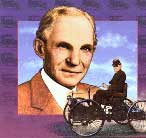Resources
Valuable resources are available for you – including NLP Practice Groups, NLP Library and NLP Online Community.
Lessons
» Eye Patterns (11)
» Anchoring I (12)
» Anchoring II (13)
» Reframing I (14)
Audio/Video Contributions
» Eye Access Cues
» What is an Anchor?
» Anchoring Self-Confidence
» Set Anchor
» Reframing Examples
Text Articles
» Eye Access Cues
» Anchors in Everyday Life
» Smell Anchor
Success Checks
» Testing 01
» Testing 02
reframing
As discussed in Lesson 14, reframing is about placing something in a different context or reinterpreting it. The goal is to perceive a behavior, a problem, or a situation in a different way and thus give it a new meaning.

The realization that it is not the things themselves that have meaning, but rather our interpretation that gives them significance, was already known in antiquity. The Roman Emperor Marcus Aurelius wrote: “It is not the things themselves that disturb us, but our interpretation of their meaning that determines our reaction.”
Where do reframings appear?
Reframing is also a central element in the creative process: It is the ability to place an ordinary event in a new context, which is useful or entertaining. Arthur Koestler refers to this process in “The Act of Creation” “Bisoziation” – the ability to view an event simultaneously in two completely different contexts.
Reframings can occur on a cognitive level and change feelings. They often also trigger surprise or humor. You can find reframings in the following areas, for example:

Jokes: Almost every joke works through reframing – it initially places an event in a familiar context and then abruptly changes it. Example: What do Alexander the Great and Smokey the Bear have in common?

Fables and stories: For example, in Pinocchio. His long nose is initially negative because it shows that he is lying – but later it becomes a rescue because it keeps the mouth of the whale open.

Creative processes: An unusual event can suddenly seem useful in a new context. A man woke up at night because a rusty spring from his old mattress was poking into his back. Instead of getting angry, he asked himself: “What could one use such a spring for?” He reframed it – and turned it into a stylish egg cup, with which he founded a successful company.

A friend of physicist Donald Glaser pointed to a glass of beer and jokingly said: “Why don't you use that to catch your subatomic particles?” Glaser looked at the bubbles in the beer, went back to the lab – and invented the bubble chamber, which made particle tracks visible in physical experiments.
Anecdote from Henry Ford: A young employee had lost several hundred thousand dollars due to a management error and expected to be fired. Ford simply said: “Are you joking? I just invested several hundred thousand dollars in your training. I am sure this investment will pay off.”
In the next additional lesson, you will learn about different types of reframing and a method to free yourself from old, unwanted habits.







